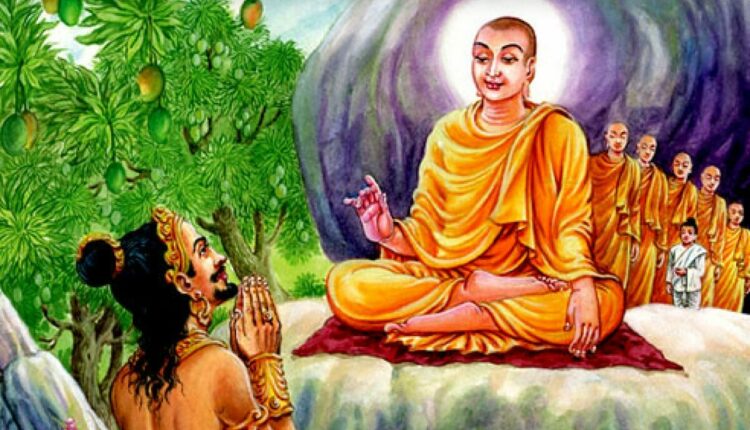Poson full moon poya day
Today is the Poson Full Moon Poya Day, a significant occasion for Buddhists, second only to Vesak, the supreme Poya day celebrated globally. On Poson Poya Day, Arhat Mahinda Thero arrived in Sri Lanka, marking a pivotal moment in the island’s history. Following the noble Vesak Poya Day, Poson Poya holds great importance for Buddhists, symbolizing gratitude—a value first taught by the Buddha and deeply ingrained in Buddhist culture.
Millennia after the arrival of Arhat Mahinda Thero and his retinue, Sri Lankans continue to celebrate this day with deep gratitude. The historic Ambasthala area became known as Mihintale following Arhat Mahinda Thero’s arrival. King Devanampiyatissa and subsequent monarchs significantly contributed to the Buddha Sasana, with Mihintale at the center of their efforts. The advent of Buddhism from India brought profound transformations to Sri Lanka, including advancements in literature, arts, crafts, agriculture, technology, and medicine, facilitated by Indian scholars and artisans.
The ancient arts and agricultural techniques still evident today testify to the transformative impact of Buddhism on Sri Lanka. The socio-political and socio-economic changes were equally significant. Before Arhat Mahinda Thero’s arrival, Sri Lanka experienced slow growth in many areas. The influx of skilled individuals accelerated the nation’s development across various domains, including culture, art, literature, architecture, and technology. Sri Lankan Buddhists remain eternally grateful for these contributions.
Arhat Mahinda Thero initially approached the king and the ruling class, gradually disseminating Buddhism among the common people. During Poson, Sri Lankans venerate and express gratitude to Arhat Mahinda Thero for his profound contributions to the nation’s spiritual, cultural, educational, and technological progress.
Before Buddhism, ancient Sri Lankans practiced aimless worship of inanimate objects. Arhat Mahinda Thero introduced Buddhism, teaching that individuals are the masters of their own lives. Buddhist monks, living simply in forest caves and relying on alms, exemplified the beauty of the religion. People adopted the five precepts and non-violence, integrating these principles into their livelihoods and agriculture.
Instead of seeking liberation from unseen gods, people sought refuge in the Three Jewels: the Buddha, the Dhamma, and the Sangha. Worship practices became more civilized, with people venerating the Bodhi tree, creating Buddha statues, and erecting stupas to enshrine the Buddha’s relics. These changes enriched Sri Lankan culture, transitioning from uncivilized practices to more organized and spiritually fulfilling ones.
Arts, crafts, literature, and language underwent a paradigm shift due to Indian influence, especially after the arrival of Arhat Mahinda Thero. The subsequent arrival of nun Sanghamitta further enriched Buddhist culture with the Mauryan Empire’s lofty and intricate crafts. This period saw the creation of remarkable works such as Wahalkada, Sandakada Pahana, and the Avukana Buddha statue, testaments to the richness of Sri Lankan craftsmanship.
With Buddhism’s advent, Sri Lanka became a hub for Buddhist learning and practice. It is imperative to preserve these cultural and religious creations, celebrating our nation’s transformation into a more civilized and advanced society. Let us honor the legacy of Arhat Mahinda Thero and the profound impact of Buddhism on our nation.
©️Satipatthana Buddhist Magazine

